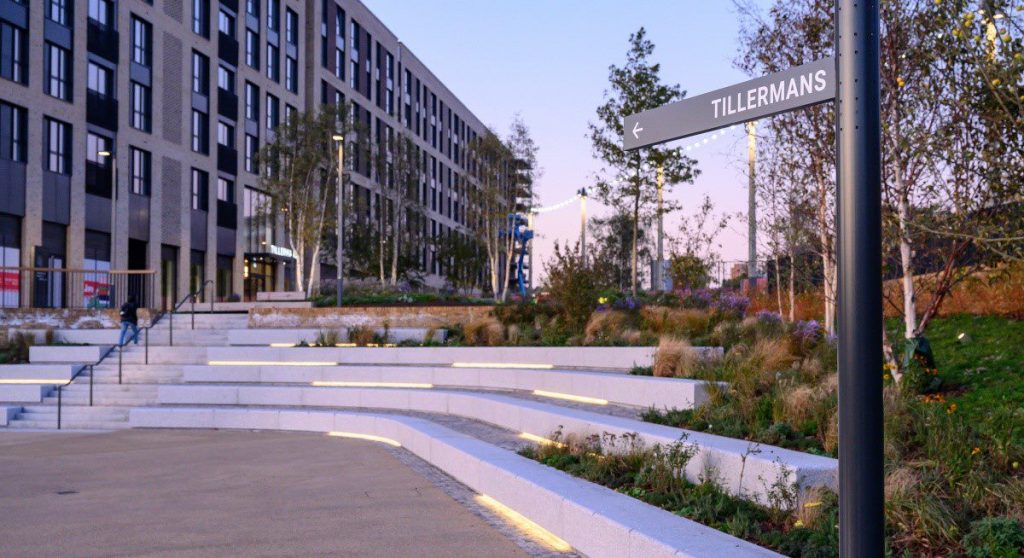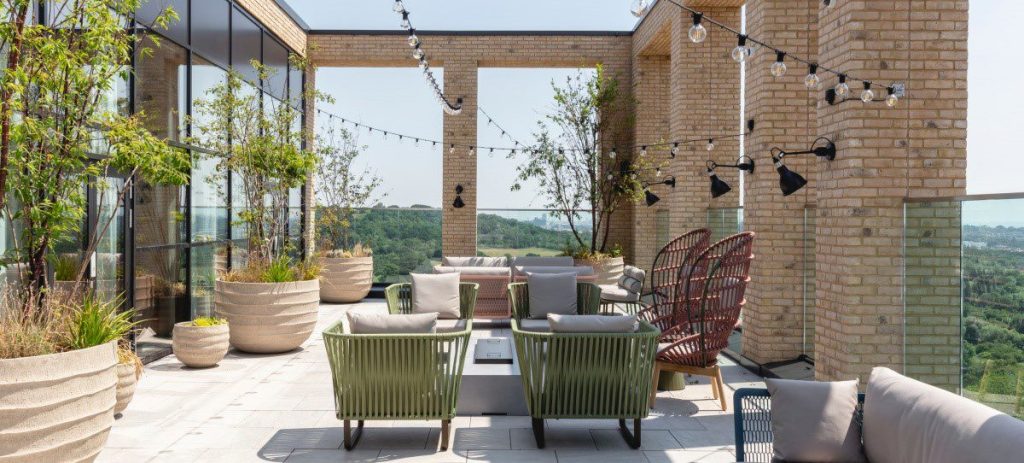I live in a three-bed semi in the suburbs. I said I wouldn’t do it, but I did.
I have a German wife from a culture of renting, where you make your rental home your own, often fitting your own kitchen, decorating your own space, because in the German rental market you have security of tenure.
As we all know, it doesn’t work like that here. So we followed the well-beaten track, mortgaged ourselves up to the hilt and threw ourselves into our owner-occupied money pit, as is the UK way.
At that point I didn’t really understand much about the Private Rented Sector (PRS), and especially not Build to Rent (BTR), but I have gained an understanding, and try to assist others in the planning sector to understand it too.
This, for me, is the critical starting point to all planning discussions regarding developments comprising BTR.
BTR as a response to an identified demand, crucially, BTR as a choice that people make.
The place to start has to be: What is Build to Rent?
The place to start has to be: What is Build to Rent?
This has been asked by many since the nascent stages of the sector in the UK. The problem remains that definitions are innumerable, which doesn’t exactly breed clarity. But it’s essential to answer this question in order to establish its role, and how best to deliver it through the UK planning system.
The Government defines BTR in the National Planning Policy Framework.
The key terms are: ‘purpose built’; ‘longer tenancy agreements’; ‘professional management’; and ‘single ownership’.
However, it includes terms such as ‘typically’ and ‘usually’ creating a level of ambiguity which, in my view, is unhelpful.
The London Plan refers you to its detailed policy wording. This is a generally valuable inclusion, and largely covers matters similar to the national definition. That said, elements of it are very prescriptive, and it is a little difficult for the layperson to understand.
What is absolutely clear, is that for BTR to be understood, the definition needs to be consistent, and simple.
There is an argument for BTR to be a different planning-use class as it is certainly a different asset class
Perhaps something like: “Housing in which each home is rented rather than sold, covenanted as such on a long-term basis, that is specifically designed for the rental market, and professionally managed as such.”
There is an argument for BTR to be a different planning use class as it is certainly a different asset class.
On that note, more efforts have been made over recent years to differentiate the economics of a BTR product from that of for-sale housing, which is essential for the affordable housing and viability component particularly. This is now being better understood by most parties, at officer level at least, particularly the implications of requiring more traditional, affordable housing within BTR proposals.
When faced with officers who haven’t benefited from any significant BTR experience, the challenge reverts to education. It comes back to explaining how it is different, and why it should not be considered the same as housing for sale.
In a recent example, the offer to a London Borough of a visit to a successful and operational BTR scheme was met with a response of: “We haven’t got the resource to visit schemes.”
Clearly, council resourcing remains a huge issue for the industry. If officers are unable to get away from their desks to view the schemes that are operational, it will be far more difficult for them to understand the implications of the requirements imposed or decisions that they make.

Ian Mayhead would like council officers to make frequent visits to successful BTR sites so they can better understand the difference between Build to Rent and for-sale housing / Pic: Greystar (Greenford Quay)
It is imperative that this understanding also continues to work its way to the elected members who are the key decision-makers in most instances. There is still significant work to do in this regard, albeit the training needs of members in an increasingly complex planning world is not limited to a better understanding of BTR. We as an industry need to do our bit to improve the knowledge of the sector for all stakeholders.
In relation to other matters, predominantly design or layout, BTR is still usually assessed in the same manner as for-sale housing.
Again, forgive me for appearing London-focused, but I use the example of the Greater London Authority where policy seems to be more mature. It is unfortunately clear that, in spite of industry lobbying, there remains no intention to differentiate BTR from for-sale housing when it comes to design policies and guidance.
This could see adopted policy and emerging standards applied more rigidly, stifling the continued growth of this important alternative housing choice. Decision-makers need to remember why the policies and standards were introduced in the first place, and note that their purpose focused around for-sale housing.
For example, the continued requirement for a maximum of eight units per core limits the efficient functioning of many BTR buildings.
The Affordable Housing and Viability Supplementary Planning Guidance (Homes for Londoners 2017) specifically stated that the value of on-site management and purpose-built design may allow flexibility on some design standards, such as number of homes per floor and number of single-aspect homes.
It seems a crying shame that this flexibility has not been carried through to current adopted policy, to reflect the distinct nature of BTR housing. In the case of co-living, there is an emphasis on the other facilities provided communally and the benefit these could bring; perhaps an element of this could be brought into the consideration of BTR?
Most recently the draft Housing Design Standards London Plan Guidance is extremely prescriptive and likely to create issues for the efficient management and maintenance of BTR buildings.
This question was raised in the recent consultation event, and it is a shame the answer was simply: “What if the scheme reverts to for-sale housing later? We would want to ensure the quality of accommodation is there”.
To our knowledge there is no evidence to suggest that BTR is reverting, or would revert, to for-sale housing, although it is relatively early days.
There are various reasons why it might not be a simple change in any case, given the specific design characteristics (and relative inefficiency) of some BTR buildings.
In addition, this response seems to ignore the reason there is an insistence on long covenant periods, and is a significant move away from the guidance when BTR first started to gain a foothold in the UK housing market.
It feels a bit like issues that weren’t there five years ago, before policy brought more regulation, are now issues for BTR to overcome and may even slow the growth of the highest quality BTR product.
Design standards that are difficult for BTR schemes to achieve whilst retaining their operational efficiencies include the number of homes per core and dual-aspect homes referred to above, but also other requirements such as private external amenity space.
There are a number of ways to justify divergences from these requirements, a particularly strong one being in circumstances where the resident communal spaces provided are generous both

"Design standards that are difficult for BTR schemes to achieve whilst retaining their operational efficiencies include the number of homes per core ... but also other requirements such as private external amenity space," writes Ian Mayhead / Pic: Greystar (Greenford Quay)
For example, amenity provision on upper floors, with both internal and external spaces and excellent access to daylight / sunlight, dual or sometimes triple aspect, should be capable of overcoming some concerns regarding the aspect of an individual apartment, its size, or the lack of a balcony.
Furthermore, couldn’t car and cycle parking be approached differently for a proper BTR scheme? It would seem the use of cycle and car clubs could be very successful in such cases.
In terms of what is to be done in order to successfully deliver true BTR schemes, we need to ensure everyone values their role in creating successful, sustainable, mixed and balanced communities, perhaps using some or all of following key steps:
Understanding – what is it?
- Define and explain BTR
- Be clear on why / how it is different to the private rented sector?
- What purpose does it serve, what need does it address?
Educating – why BTR?
- Importance of early engagement with officers, Members and the wider community
- Long-term placemaking, ensured by management of internal and external spaces including public realm, multiple “sales” of each apartment, not just once
Built to last, not to sell
- Highly managed product, focus on resident experience
- Genuinely tenure blind, creating mixed communities with a range of rental discounts able to be applied to a scheme, depending on:
- Logical layouts, suitable for families or sharers
- Shared spaces, on-site facilities as an extra to the apartment itself
Delivering
- Speed is key; sooner they let, sooner they generate income
- No benefit from wait-and-see approach
These should be persuasive tools in the understanding of BTR, which is still in its relative infancy in the UK.
As ever, developing the relationships, explaining BTR, demonstrating its benefits, are key to ensuring it is well understood.
Follow these principles and the path should be smoother through planning.